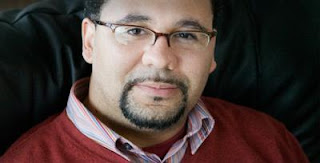It's not due soley to poverty or inferior health care, study finds
MAYWOOD, Il. - African Americans are more likely than other races to die from breast, prostate and ovarian cancers, but this disparity is not due to poverty or inferior healthcare, a first-of-its-kind study has found.
Researchers followed more than 19,000 patients who were enrolled in cancer clinical trials conducted by the Southwest Oncology Group, a National Cancer Institute-funded clinical trials national cooperative. Patients of all races received the same advanced treatments by the same doctors.
"It was a level playing field for everyone, with the same quality care," said lead author Dr. Kathy Albain. "So our findings cast doubt on a prevailing theory that African Americans have lower cancer survival rates because of poverty, poor access to quality care or other socioeconomic factors." Albain is a breast and lung cancer specialist at Loyola University Health System's Cardinal Bernardin Cancer Center.
 | If poverty or other socioeconomic factors were to blame, then the survival gap should exist for all cancers. |
"The good news for African Americans is that for most common cancers, they have the same survival rates as all other races," Albain said.
The cancers that did show survival gaps -- breast, prostate and ovarian -- are gender-related. The findings therefore suggest that the survival gap is due to a complex interaction of biologic factors in the tumor and inherited variations in common genes that control metabolism of drugs and hormones, Albain said. People with different patterns of these genes metabolize cancer drugs and their own hormones differently, and experience different side effects.
"We are actively conducting new research based on these findings to explore interactions among tumor biology, treatment, sex, race, inherited genes and survival," Albain said.
Dr. Patrick Stiff, director of the Cardinal Bernardin Cancer Center, said: "This groundbreaking study will provide investigators with a road map for future research that will improve outcomes of patients of all races and socioeconomic status."
Researchers identified 19,457 adult cancer patients enrolled in 35 Southwest Oncology Group clinical trials who were followed for at least 10 years after treatment. Twelve percent of the patients were African American. During the course of the study, African Americans were 49 percent more likely than other races to die from early-stage, postmenopausal breast cancer; 41 percent more likely to die from early stage, premenopausal breast cancer; 61 percent more likely to die from advanced-stage ovarian cancer and 21 percent more likely to die from advanced-stage prostate cancer. ###
Albain is a professor in the Department of Medicine, Division of Hematology/Oncology, Loyola University Chicago Stritch School of Medicine. Her co-authors are Joseph Unger and John Crowley of the Southwest Oncology Group Statistical Center, Dr.Charles Coltman of the University of Texas Health Science Center and Dr. Dawn Hershman of Columbia University College of Physicians and Surgeons.
The study was funded by the National Cancer Institute.
Based in the western suburbs of Chicago, Loyola University Health System is a quaternary care system with a 61-acre main medical center campus, the 36-acre Gottlieb Memorial Hospital campus and 28 primary and specialty care facilities in Cook, Will and DuPage counties. The medical center campus is conveniently located in Maywood, 13 miles west of the Chicago Loop and 8 miles east of Oak Brook, Ill. The heart of the medical center campus, Loyola University Hospital, is a 561-licensed bed facility. It houses a Level 1 Trauma Center, a Burn Center and the Ronald McDonald® Children's Hospital of Loyola University Medical Center. Also on campus are the Cardinal Bernardin Cancer Center, Loyola Outpatient Center, Center for Heart & Vascular Medicine and Loyola Oral Health Center as well as the LUC Stritch School of Medicine, the LUC Marcella Niehoff School of Nursing and the Loyola Center for Fitness. Loyola's Gottlieb campus in Melrose Park includes the 264-bed community hospital, the Gottlieb Center for Fitness and the Marjorie G. Weinberg Cancer Care Center.
Contact: Jim Ritter jritter@lumc.edu 708-216-2445 Loyola University Health System




























